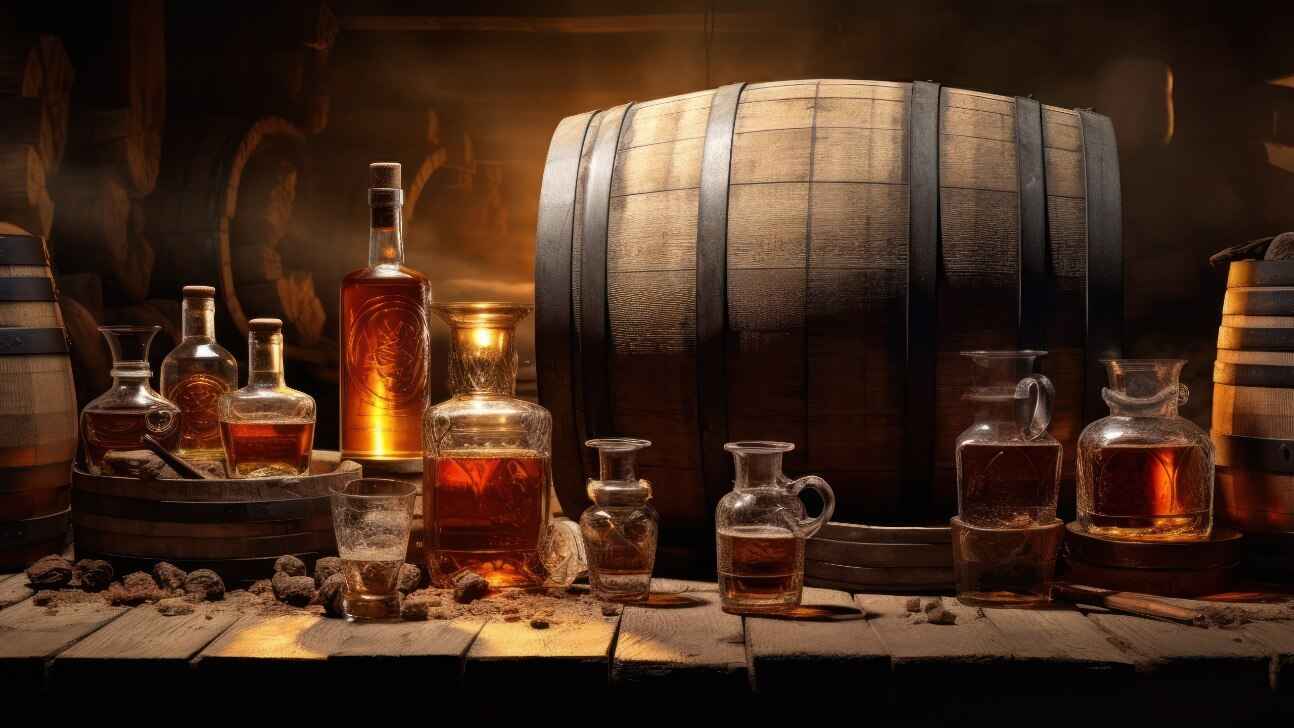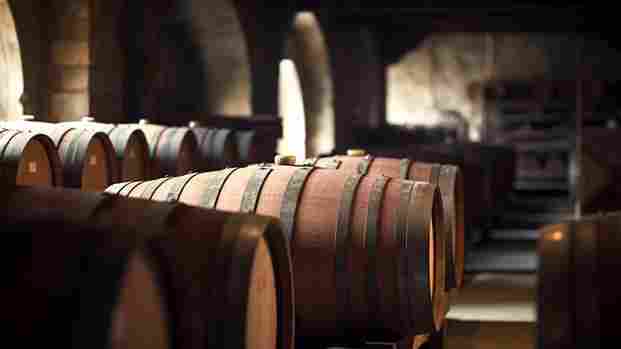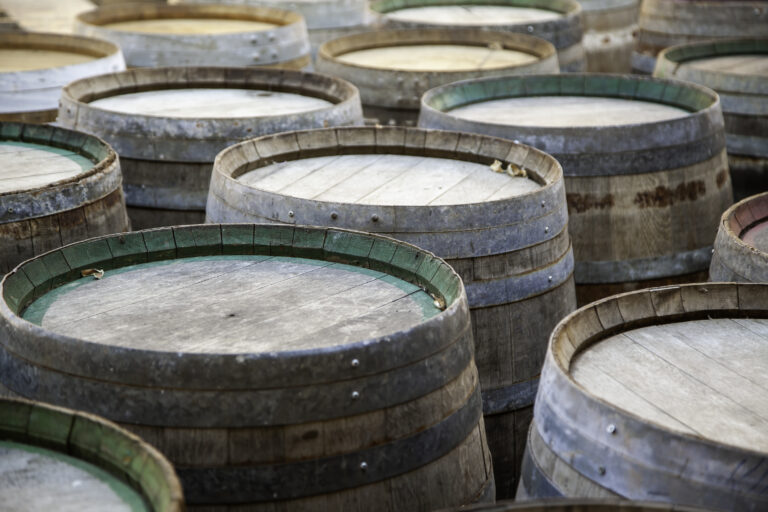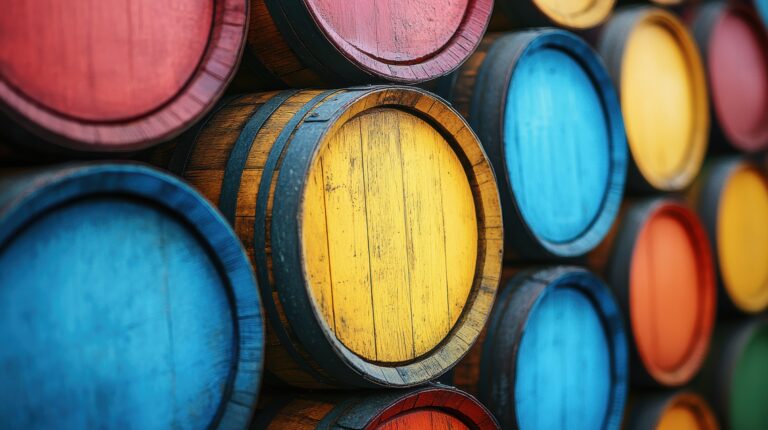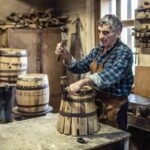When you want to age your own whiskey at home, choosing the right barrel is key. You’ve spent time carefully crafting your mash and distilling your spirit, now you need a vessel to impart flavor and character during maturation. Oak barrels have been used for centuries, but not just any oak barrel will do. You want one specifically tailored to aging spirits that will enhance your whiskey rather than overpower it. The type of oak, previous use, and char level all matter when it comes to selecting barrels for home aging whiskey. In this guide, we’ll walk you through everything you need to know to choose barrels that will transform your distilled spirit into a complex, flavorful aged whiskey.
Introduction to Barrel Aging for Whiskey
Aging whiskey in barrels enhances its flavor and aroma. Barrel aging allows the whiskey to absorb compounds from the wood, like vanilla and caramel notes. The type of barrel used and length of aging impact the end result.
Charred oak barrels, usually American white oak, are commonly used. The charring process creates a layer of charcoal inside the barrel that helps filter and mellow the whiskey. Oak barrels impart a golden color and distinctive oak flavors. For a lighter, fruity flavor, consider used bourbon barrels.
The size of the barrel also matters. Smaller barrels mean more surface area so the whiskey has more contact with the wood, resulting in faster aging. Larger barrels produce a whiskey with wood notes that are more subtle.
Aging time depends on the type of whiskey and desired flavor profile. A few years may be enough for a smooth, mellow whiskey. Decades of aging lead to a whiskey with rich, intense wood and spice notes as well as a darker color.
Patience is key. While aging whiskey for longer enhances its character, the whiskey can become over-oaked if left too long. An experienced distiller knows just how long to age a whiskey to achieve the perfect balance of flavors.
With the variety of barrels and aging options, you can create a custom whiskey tailored to your tastes. Understanding how barrels and aging affect the final product will help ensure you end up with exactly the whiskey you want.
History of Oak Barrels for Whiskey Aging
Whiskey and oak barrels go way back. For centuries, distillers have been aging spirits in charred oak casks to impart flavor and color.
Originally, barrels were simply a convenient container for transportation and storage. Distillers noticed that whiskey aged in oak barrels tasted smoother and more complex. The oak wood interacts with the spirit, extracting compounds like lignin, tannins, and hemicellulose.
By the 1860s, bourbon distillers discovered that charring the inside of barrels enhanced the aging process. The char creates a layer of carbon that filters and mellows the whiskey. Many distillers char barrels at varying levels to produce different flavors. More char means more smoky, spicy notes.
For Scotch whisky, used bourbon barrels are popular. The first fill bourbon barrels still have plenty of flavor to impart. As Scotch ages for years, sometimes decades, in these casks, it develops a distinctive sweet and smoky character.
There’s no replacing the effect of real oak barrels. Modern aging technologies try to speed up the process, but traditional barrel-aging is an art form.Patience, wood variety, char level, and a master distiller’s intuition all combine to create an exceptional aged spirit. Century-old distilleries still swear by time-honored barrel-aging. Some things never go out of style.
Types of Oak Used for Whiskey Barrels
There are three main types of oak used for aging whiskey:
American White Oak
American white oak is the most common type used for whiskey barrels. It has tight grain that allows for liquid to seep in and out, imparting flavors to the whiskey. The oak contains compounds like lactones and vanillins that provide a vanilla and coconut aroma.
European Oak
European oak, from trees like French oak and Hungarian oak, is sometimes used for whiskey aging. The tight grain of the wood allows for interaction between the whiskey and the oak. European oak tends to impart spicier flavors to the whiskey like clove and nutmeg. Some distilleries use barrels made from both American and European oak to create a blend of flavors.
Japanese Oak
Mizunara oak from Japan is rarely used for whiskey barrels but provides a unique flavor. The oak contains compounds that impart floral, fruity aromas like coconut, sandalwood and jasmine. The wood is porous so it allows for substantial interaction and flavor infusion in the whiskey. A few distilleries use mizunara oak barrels to age their whiskeys and create a distinct flavor profile.
Using a variety of oak types, grains, and barrels from different areas allows distilleries to create unique and complex flavors in their aged whiskeys. The specific compounds in each oak varietal impart distinctive notes to the whiskey. Blending whiskies aged in different barrels leads to an array of flavors not found in single-barrel whiskies.
How Char Level Impacts Whiskey’s Flavor
How Char Level Impacts Whiskey’s Flavor
The char level of the oak barrels used to age whiskey has a significant impact on the flavor. As the barrel is charred, compounds break down and impart smoky notes.
The charred layer also acts as a filter, mellowing the whiskey as it penetrates the wood. More char means more surface area and more flavor extraction. Heavy char yields richer, smokier flavors like vanilla, caramel and chocolate. Medium char provides balanced oak and smoky tones. Light char produces lighter, fresher oak notes like citrus and spice.
The char level is tailored to the desired flavor profile of the whiskey. Bourbon often uses heavy char for robust oakiness, while scotch may use lighter char to highlight the natural malt flavor. The interaction between char level and aging time also determines flavor, as longer aging results in deeper penetration of compounds from the wood.
Whiskey makers utilize different barrel char levels as a tool to craft a distinct taste. The char imparted by the barrels, along with other factors like grain bill, yeast strain, distillation method and aging environment, all converge to create an inimitably complex spirit. Finding the right combination of these variables is key to producing a whiskey with character.
The Importance of Barrel Size for Aging Whiskey
The size of the barrel used to age whiskey has a significant impact on the final flavor. Smaller barrels, like those holding 5 to 30 gallons, allow for more contact between the whiskey and the wood. This results in the whiskey absorbing more flavor compounds from the barrel in a shorter amount of time.
The greater surface area to volume ratio of smaller barrels means the whiskey is exposed to more wood as it ages. This accelerates the aging process and intensifies the wood flavors in the whiskey. The whiskey can pick up pronounced notes of vanilla, caramel and spice in just a few years.
Larger barrels, holding 50 to 100 gallons or more, have a lower surface area to volume ratio so the whiskey ages more slowly. It may need a decade or longer to develop deep wood flavors. But this longer, slower aging allows for more complex flavors to emerge. The whiskey gains subtle notes of nuts, dark fruit and oak in addition to the classic vanilla and caramel.
In the end, barrel size comes down to a matter of personal taste and how quickly you want to enjoy the aged whiskey. Both large and small barrels can produce exceptional whiskey, but they achieve unique flavor profiles following different paths. Finding the right balance of barrel size and aging time is an art form mastered by the finest distillers.
Used Bourbon Barrels vs. New Oak Barrels
When it comes to aging whiskey, you have two options for barrels: used bourbon barrels or new charred oak barrels. Each has its pros and cons, so you’ll want to consider them carefully based on the flavor profile you’re aiming to achieve.
Used Bourbon Barrels
Used bourbon barrels, also known as “second-use” barrels, have already been used to age bourbon for a few years. Since the wood has already been exposed to bourbon, the barrel will impart more subtle oak and vanilla notes to the whiskey. The bourbon flavors and aromas that have seeped into the wood over time will also influence the final flavor of the aged whiskey. Due to their prior use, used barrels tend to produce a whiskey with sweeter, smokey notes in a shorter period of time.
New Charred Oak Barrels
New charred oak barrels have never been used before, so they will impart bolder oak flavors to the whiskey as it ages. The whiskey will extract more tannins and lignins from the wood, resulting in a spicier, woodier flavor. However, it can take longer for the whiskey to mellow and round out. New barrels are often used when aging whiskey that benefits from a strong oak influence, such as rye whiskeys.
In the end, you need to determine how much oak flavor and how quickly you want to achieve it. Used bourbon barrels will accelerate the aging process, while new charred oak barrels take more time but result in a whiskey heavily influenced by the wood. The choice is yours!
How Long Whiskey Is Aged in Barrels
The aging process is one of the most important parts that determines a whiskey’s flavor and quality. Typically, whiskey is aged for at least 2-3 years, but some premium brands are aged for 10-25 years or more. The longer a whiskey ages, the more complex its flavor becomes.
As whiskey ages in charred oak barrels, it soaks in the wood’s flavors and aroma compounds. The barrel also allows oxygen in, which causes chemical reactions that change the whiskey’s color and taste. The whiskey picks up vanilla, caramel and spice notes from the wood. Over time, it darkens to an amber or copper color.
The aging location impacts flavor too. Whiskey aged in warmer climates, like Kentucky bourbon, tend to age faster than whiskeys in cooler areas. The heat causes more interaction with the wood, accelerating the aging process. Colder temperatures slow aging and often produce lighter, fruitier flavors.
To determine if a whiskey is ready, distillers regularly sample barrels to check flavor and aroma. They’re looking for a balanced, complex blend of wood and grain notes. When it’s peaked, the whiskey is bottled as a premium aged spirit.
While aging is usually thought of as the more the better, that’s not always the case. At some point, a whiskey can become over-aged, with wood flavors overpowering the original grain flavors. Master distillers carefully monitor aging whiskey to bottle it at its peak. That’s when all the flavors have married into a perfect, harmonious blend.
Regional Differences in Whiskey Barrels
When it comes to aging whiskey, the type of barrel used can make a big difference in the final flavor. Barrels from different regions are made from various types of oak and produced using different methods, leading to distinct tastes in the aged spirit.
American White Oak
The most common barrels used in whiskey aging are made from American white oak. These barrels impart notes of vanilla, caramel, and spice. Bourbon, for example, must be aged in new charred oak barrels, usually American white oak. The charring process caramelizes the wood’s natural sugars, enhancing these flavor notes.
European Oak
Barrels made from European oaks like French oak and Hungarian oak are often used to age Scotch whisky. These barrels tend to produce aromas and tastes of dried fruit like raisins, prunes as well as nutty, savory flavors. The tighter grain of European oak means less oxidation and interaction with the spirit.
Japanese Mizunara Oak
Some Japanese distilleries use native Mizunara oak for aging. This oak is very porous, resulting in a whiskey with distinctive sandalwood, incense and coconut notes along with the vanilla and caramel from American oak. The increased interaction with oxygen often gives these whiskies an orange or amber hue.
In the end, the type of oak, and thus the barrel’s origin, has a significant impact on a whiskey’s taste and aroma. Exploring different barrels from around the world can lead to an exciting journey of discovering various flavor profiles.
FAQ on Barrels for Whiskey Aging
FAQ on Barrels for Whiskey Aging
Barrel aging is essential for giving whiskey its distinctive flavor and aroma. Here are some frequently asked questions about the barrels used in the whiskey aging process:
- What types of barrels are used? The most common types are charred oak barrels, typically American white oak or European oak. Oak barrels impart flavors like vanilla, caramel and spice.
- How are barrels prepared? Barrels are toasted or charred on the inside to activate the wood and release compounds that infuse the whiskey. The level of char or toast impacts the flavor. More char means more smoky, roasted notes.
- How long is whiskey aged? There is no set time. It can range from 3 to 30+ years. Aging depends on the type of whiskey and the distiller’s preference. More age usually means a smoother, more complex flavor.
- What happens during aging? The whiskey absorbs compounds from the wood like lactones, tannins and lignin that give aged whiskey its characteristic taste and color. As whiskey ages, it also evaporates, which is known as the “angel’s share”. This concentrates the flavor.
- How are barrels reused? After initial use, barrels are often reused to age other whiskeys. With each use, barrels impart more subtle flavors. Some distillers re-char barrels to revive them. Most barrels are used 3-5 times before being retired.
- What alternatives are there to oak barrels? Some distillers experiment with barrels made of maple, hickory or other woods. Stainless steel, glass and stone containers are also being tested. But oak remains the gold standard due to its ideal properties for mellowing and flavoring whiskey.
Final Thoughts
You’ve now got the lowdown on the best barrels for home aging your whiskey. Whether you want to splurge on a fancy barrel with all the bells and whistles or keep it simple with an affordable but high-quality oak barrel, you’ve got some great options to choose from. Now the fun part begins – filling your barrel, sealing it up and waiting patiently as the aging process works its magic. In a few months, or maybe even years, you’ll have a custom aged whiskey to call your own. Crack open that barrel, pour yourself a dram and raise a toast to patience, good craftsmanship and the simple pleasures in life. Here’s to you and your newfound hobby! May your barrels always be full and your glasses always half full.
